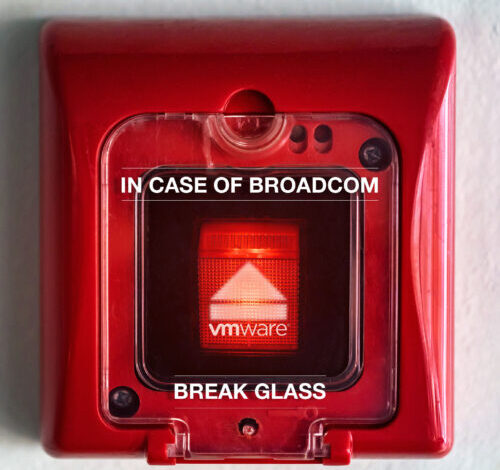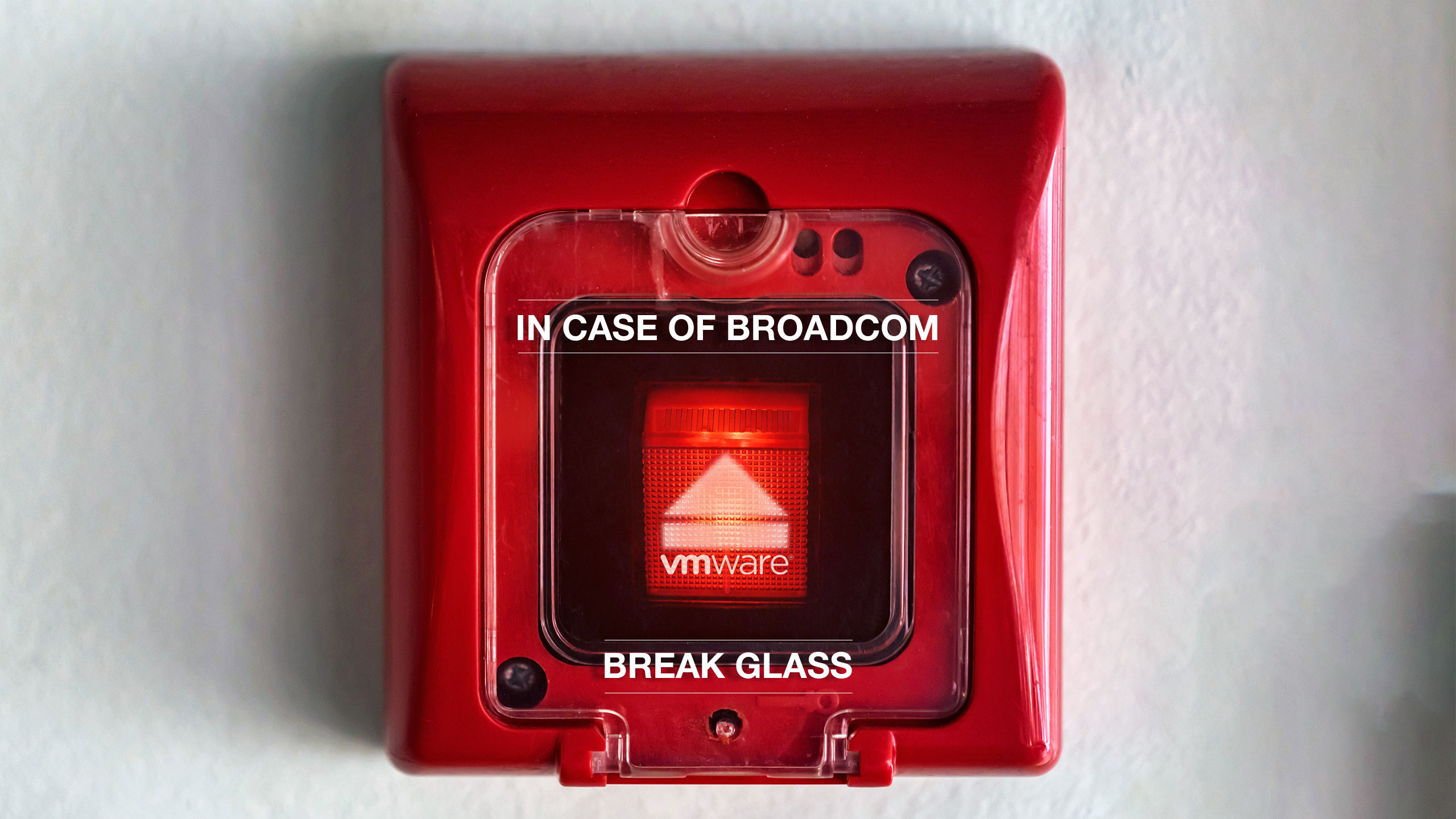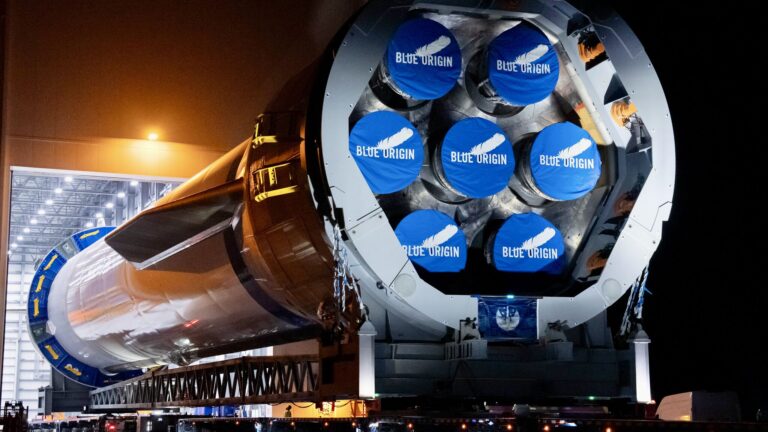A year after Broadcom’s VMware buy, customers eye exit strategies

After closing a $69 billion deal to buy virtualization technology company VMware a year ago, Broadcom wasted no time ushering in big changes to the ways customers and partners buy and sell VMware offerings—and many of those clients aren’t happy.
To get a deeper look at the impact that rising costs and overhauls like the end of VMware perpetual license sales have had on VMware users, Ars spoke with several companies in the process of quitting the software due to Broadcom’s changes.
Here’s what’s pushing them over the edge.
For some, VMware prices more than tripled under Broadcom
Broadcom closed its VMware acquisition in November 2023, and by December 2023, the company announced that it would stop selling perpetual VMware licenses. VMware products were previously sold under 8,000 SKUs, but they have now been combined into a few bundle packages. Additionally, higher CPU core requirements per CPU subscription have made VMware more expensive for some reseller partners.
“As on-premises virtualization projects move from [enterprise license agreements] and perpetual licenses to new bundling, socket-to-core ratios, and consumption models, the costs and pricing can increase two or three times,” Gartner’s 2024 Hype Cycle for Data Center Infrastructure Technologies report that released in June reads.
Numerous VMware customers I spoke with said their VMware costs rose 300 percent after Broadcom’s takeover. Some companies have cited even higher price hikes—including AT&T, which claimed that Broadcom proposed a 1,050 percent price hike. AT&T is suing Broadcom over perpetual license support and says it has looked into VMware alternatives.
IT support provider Encore Technologies is currently migrating from VMware to OpenNebula. VMware costs rising threefold under Broadcom drove the company to try other products, Bradley Bishop, Encore’s DevOps manager, told me via email. The higher costs came from Broadcom consolidating all of VMware’s offerings into two line items, he said.
“So unless you were using the entire VMware product line, a lot of companies were now forced to pay for things that they did not want or need,” he added.
Dean Colpitts, CTO at Canadian VMware customer and managed services provider Members IT Group, shared similar sentiments, adding that “Broadcom simply is not listening to what customers say they want or need” when it comes to VMware products and features, especially those related to small and medium-sized businesses.
VMware Enterprise Edition costs for Illinois’ Lake Land College rose 300 percent “with no additional features/benefits,” Director of Technical Services James Westendorf said via email. Lake Land has used VMware since 2008, but as a community college, its budget can only stretch so far, Westendorf explained:
Since we are a community college, we are responsible to the taxpayers to be good stewards of our funds and investments in technology… When there is a significant price increase, such as 300 percent, it becomes an issue that requires us to weigh the cost against the gains and seek alternative options.
When asked to comment on this story, a Broadcom representative declined to answer specific questions regarding VMware customers’ concerns. Instead, the company referred me to Broadcom CEO Hock Tan’s “recent blog posts,” which are available here.
More focus on large customers
On the other hand, large customers are more likely to be willing and able to stomach VMware price hikes. IT company Veeam, for example, saw prices for the VMware products it uses jump 300 percent, but “internal services are staying the course,” Rick Vanover, Veeam’s product strategy VP, told me.
Pricing and other changes have led some customers and partners to suspect that Broadcom prefers enterprise-sized customers for VMware. In January, Broadcom reportedly took approximately 2,000 of VMware’s biggest customers direct, cutting channel partners from the deals.
Nonprofit organizations, like hospitals and school districts, have been the clients most dramatically impacted by Broadcom’s changes to VMware, with smaller and mid-sized customers having a “high degree of difficulty” absorbing VMware’s new cost structure, Andrew Lerner, a distinguished VP analyst at Gartner, told me. He said it’s reasonable to expect enterprise-sized clients to represent a larger majority of VMware’s customer base moving forward.
“Based on what we’re hearing from clients, smaller and nonprofit customers are experiencing some combination of the following at an increased rate versus larger enterprises: a) getting hit with larger uplifts, b) being less able to absorb the cost uplifts, [and] c) [being] better able to migrate quicker due to their scale,” he said.
Quitting VMware is tricky
A June survey showed that VMware customers were expected to have concerns about Broadcom’s changes to VMware. But with VMware deeply integrated into some IT environments (and some deployments lasting for many years), planning a migration and moving off VMware can be extremely time-consuming and costly.
Lake Land College is exploring alternatives to VMware and is testing with Proxmox. If Lake Land decides to ditch VMware, it will migrate within the next year. For the community college, the biggest challenge in finding VMware alternatives is the need to find a working alternative while continuing to maintain reliable backups, according to Westendorf. “Switching hypervisors isn’t something to take lightly,” he said. “It will require lots of stability testing and proof of concepts prior to changing.”
He emphasized difficulties stemming from the amount of time required to create a new hypervisor cluster, conduct training, and deal with the differences in the way VMware alternatives perform and operate.
“Planning and testing won’t be hardware-expensive but will take some work [from] the staff to make sure we are implementing correctly,” Westendorf said.
Encore is still using “a small amount” of VMware’s vCenter server management software and vSphere server virtualization solution, Bishop said. At the beginning of 2024, the IT solution provider began actively searching for and testing alternative platforms. Encore struggled to find a way to run all of its workloads using a single product and tested eight products before settling on OpenNebula.
“Encore and our customers have lots of different and vendor-specific workloads that cannot run on all platforms. Vendors would typically issue installers that in the past were built specifically for VMware,” Bishop said. “In addition, VMware offers many resources and products that Encore and our customers use.”
Before Encore started migrating, it transitioned its development environments and conducted employee training. Product migration started in May, and about 60 percent of Encore’s total infrastructure has been moved as of this writing. “[We] are actively working to have 0 percent of our infrastructure on VMware, with a goal to be finished by the end of the year,” Bishop said.
Customers are researching alternatives to VMware
Because VMware is the biggest name in virtualization, Broadcom’s changes have had a massive impact on a base of over 500,000 customers. And this is contributing to the growth of broader trends in IT, like revirtualization and devirtualization.
Revirtualization is the “introduction of a replacement hypervisor-based virtualization technology and associated software for management and resilience for live migration and host-based recovery,” Gartner’s 2024 Hype Cycle explains. Revirtualization has penetrated 5 to 20 percent of the target market and can be “introduced due to commercial audit and license issues or vendor merger, acquisition, or divestiture,” according to Gartner’s report.
Going further, Gartner’s Lerner said:
The biggest accelerant we’ve seen for revirt[ualization] efforts are cost/commercial challenges associated with … Broadcom’s acquisition of VMware. The increases are due to several factors, including the required shift from perpetual licenses to subscriptions, changing the compute licensing metric, and simplifying the offers to a limited number of bundles.
Broadcom’s VMware acquisition is also driving interest in devirtualization, or as Gartner’s Hype Cycle describes it, “the moving of a workload or application from a hypervisor-based virtualized host to a physical host consisting of server hardware, operating system, and management tools.” According to the analyst firm, cost issues related to “moving from perpetual license to capacity consumption models” can trigger devirtualization efforts.
Lerner added that the drivers for devirtualization are “broader” than those for revirtualization and include general modernization, cloud strategy, and the performance/efficiency of workloads.
Devirtualization has a market penetration of less than 1 percent of the target market, Gartner said. But it’s still interesting to see Broadcom’s acquisition pushing a trend that Gartner expects may take five to 10 years to reach widespread adoption.
When asked how devirtualization and revirtualization trends are expected to impact Broadcom’s VMware business in the long term, Lerner said:
Broadcom’s commercial practices are causing their customers to explore alternative approaches and reduce their dependence on Broadcom. Further, we believe this is harming long-term customer loyalty and creating long-term reputational and sentiment damage.
Members IT Group’s Colpitts, meanwhile, fears that Broadcom’s push for subscription pricing is rubbing off on rivals like Citrix. “We are seeing absolutely ridiculous quotes from Citrix now to add just a few seats,” he said.
“Tell Broadcom to buzz off”
Some VMware channel partners have seen their reselling businesses hurt under the new Broadcom terms. In February, Broadcom ended the VMware Partner Program in favor of its own, and in addition to taking VMware’s biggest customers direct, tougher partner program criteria has fueled concerns that there isn’t room for smaller VMware customers under Broadcom. VMware is estimated to have had about 25,300 reseller partners before Broadcom bought it; Broadcom now says VMware has over 18,000 channel partners.
Encore was a VMware channel partner for over eight years. After Broadcom axed many VMware partners, Encore decided to purchase VMware through one of Broadcom’s select few VMware Premier Partners so that it could continue supporting internal and customer environments. Broadcom’s VMware acquisition has “definitely impacted” the majority of Encore’s customers, Bishop said. “Most of our customers are actively searching for alternatives,” he said.
Similarly, Veeam’s Vanover said that Broadcom’s changes come up in “effectively every conversation” in his role as product strategy VP, including with companies who intend to stay with VMware.
“I currently see two other distinct camps,” Vanover added. “There are organizations that already have multiple virtual platforms in place and are looking to rebalance their distribution (including the cloud). Secondly, [there are] organizations that are preparing to do a wholesale evacuation from VMware. It is happening in the market.”
Members IT Group has been a VMware channel partner since 2007, but Colpitts says the company hasn’t been selling as much VMware as before:
The biggest issue is just trying to get quotes out of [Broadcom]. At one point over the summer, it took 7 weeks to get a net new customer quoted by them, so it is delaying projects. And if we have special bid pricing from other vendors (i.e., [Hewlett Packard Enterprise]) as part of the entire solution, we’ve seen that pricing expire before we can even present the full solution to the customer.
Colpitts pointed to customers reportedly seeing 146, 179, and 201 percent annual increases in VMware costs. With rising prices, “my current advice to my customers is to tell Broadcom to buzz off,” Colpitts said, advising customers to avoid signing up for subscriptions, even if it means losing support. Most customers are “taking a wait-and-see approach” rather than signing up for VMware subscriptions, he said.
Members IT Group is waiting to see if HPE’s new hypervisor gains traction and third-party vendor support. If it proves itself, “then we’ll likely move all our customers to it,” Colpitts said. The company is also eyeing alternatives like Proxmox for smaller customers and StorMagic’s new hypervisor.
Financial incentives for Broadcom
Changes to VMware have discouraged customers and forced them to consider other options. But Broadcom’s financial success and history with acquisitions mean Broadcom is unlikely to deviate from its plans to focus on subscriptions, bundled products, and big customers.
In its fiscal Q3 2024 earnings report (PDF) shared in September, Broadcom reported that revenue grew 47 percent year-over-year when including contributions from VMware versus 4 percent year-over-year without VMware. In a statement, Tan said that VMware integration “is driving adjusted EBITDA margin to 64 percent of revenue” as Broadcom exits fiscal year 2024. At $3.8 billion, VMware represented 29 percent of Broadcom’s quarterly revenue.
Further, VMware’s $3.8 billion in revenue surpasses the $3.5 billion reported for the same quarter in 2023, even though at the time, VMware’s 2023 numbers included about $450 million from the Omnissa and Carbon Black, which aren’t included in VMware’s Q3 2024 numbers, as The Register previously noted.
Sales of VMware Cloud Foundation (VCF) also increased for the quarter. During an earnings call, Tan said:
We booked more than 15 million CPU costs of VCF… representing over 80 percent of the total VMware products we booked during the quarter. And this translates into an annualized booking value… of $2.5 billion during Q3, up 32 percent from the preceding quarter.
VMware costs also decreased from $1.6 million in Q2 to $1.3 million in Q3, according to Tan.
It’s worth watching the lawsuit that AT&T has filed against Broadcom for a look at how Broadcom will handle expiring contracts and disgruntled customers grappling with subscriptions and rising costs. We may also see how Broadcom will manage demand for perpetual license support and any potential financial repercussions. Generally speaking, though, Broadcom seems to be staying the course.
A Broadcom company
As it stands, VMware is making Broadcom money, which means customers can expect more of the same from VMware as a Broadcom company. As Broadcom has proven with previous buys, including Symantec and CA Technologies, it’s keen on integrating its purchases, even if it alienates some customers along the way.
Broadcom often says VMware planned to move to a subscription model before the acquisition. And looking at the broader IT industry, it’s not unexpected to see VMware shift away from perpetual licensing (though the speed of the changes certainly surprised some customers).
Because of VMware’s status as a leader in virtualization, Broadcom can bank on customers’ reliance on the technology to help it avoid losing too many customers. Further, it seems Broadcom may be open to losing some of VMware’s smaller clients in favor of larger ones.
Complexities in migrating off VMware will help Broadcom maintain customers who lack the time and budget to research and implement alternatives. In a June survey of 300 director-level IT workers, 83 percent of customers with VMware contracts expiring by June 2025 said they would likely stay with VMware partially or fully.
For example, Members IT Group, which has been a VMware user since 2007, isn’t currently considering migrating. Instead, Colpitts said the firm is “hoping that someone will see the light at Broadcom or they will be regulated to change their ways.”
But the backlash may result in customers eyeing VMware rivals or devirtualization more than they would have if Broadcom didn’t buy VMware. And prospective customers now have a lot more to consider before subscribing to the service.
Scharon is Ars Technica’s Senior Product Reviewer writing news, reviews, and analysis on consumer technology, including laptops, mechanical keyboards, and monitors. She’s based in Brooklyn.





